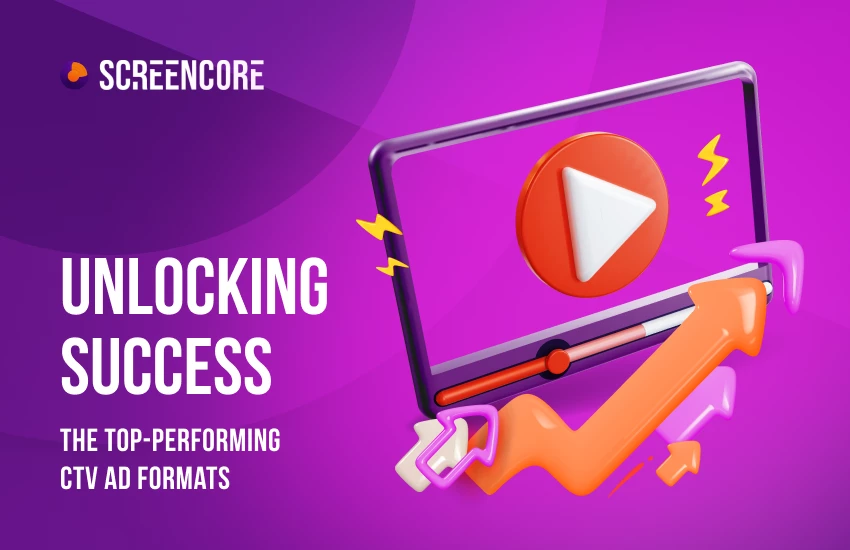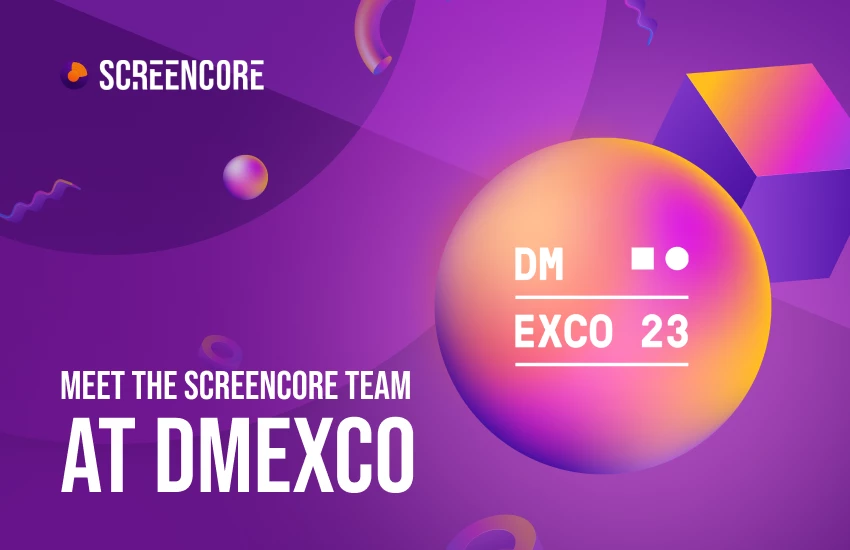Consumers' Attention: How Advertising Can Stand Out Among The Noise

4.9 billion people use the internet around the world. That's 62% of the global population. On average, people are exposed to between 6,000 and 10,000 advertisements a day, according to the Forbes article. Due to the overwhelming amount of content available, the human brain is not equipped to process all of it effectively. As a result, the majority of ads that people encounter are either ignored or forgotten. So companies need to know the best practices for capturing and retaining consumer attention. But how can they do it? Let's analyze it in our article.
Increase user engagement using interactive formats
Interactive advertising is a type of ad that presents viewers with a way to engage actively with your brand. Consumers may be invited to take specific actions to discover something or navigate your website page. Interactive advertising can include elements such as animations, games, or quizzes, and can be used to create a more memorable and engaging advertising experience.
Interactive advertisements capture consumers' attention more than static formats. According to a survey by Inskin Media, interactive ads are 47% more likely to be viewed for more than 1 second than non-interactive ads.These kinds of ads give a personalized experience to its customers which sets it apart from other advertising campaigns.
Interactive ads have been found to increase brand awareness by 91% compared to non-interactive ads, according to a study by Innovid. And a study by Nielsen found that interactive video ads can increase purchase intent by 9%.

There are several types of interactive ads that businesses can use to engage their audience:
- Interactive display advertising uses animation and clickable elements to engage users and encourage them to interact with the ad. This is one of the most popular types of interactive ads.
- Quizzes and surveys can be used to collect user data and engage users in a fun and interactive way.
- Gamified advertising uses points, levels, and rewards, to encourage people to interact with the ad.
- Interactive videos allow users to engage with the ad by making choices or completing tasks within the video.
- Interactive infographics are a way to present information visually and interactivity. Interactive infographics can include animations, clickable elements, and data visualizations that allow users to explore the content and interact with the data.
- AR advertising uses technology to overlay digital elements onto the real world, allowing users to interact with the brand in a more immersive way. This type of interactive ad is particularly popular in the retail and fashion industries.
More attention means more sales. Be very fast
Brands should perfect their communication strategies and drive memorability because more attention means more sales. Studies have shown that contextual advertising can be effective in capturing users' attention.
According to a study by Outbrain found that contextual advertising can lead to a 63% increase in engagement compared to non-contextual advertising. The study also found that contextual ads can increase brand awareness by up to 50%.
Additionally, a study by the IAB found that consumers are more likely to engage with ads that are relevant to the content they are viewing. The study found that contextual ads can increase the time spent with an ad by up to 500%.
Use special technologies for increasing advert’s memorability
Memorability needs to be one of the paramount concerns for advertisers. Ensuring memorability in your ads is crucial to cementing long-term success. Ads that focus on brand resonation as opposed to immediate sales elicitation will, over the course of a three-year period, generate profit surges of at least 140%. In contrast businesses that focus on campaigns that do not have long-term brand awareness at their core, will endure either profit stagnation or even profit reduction.

Increasing the memorability of advertising is important to ensure that the message of the ad is retained in the minds of the audience. We recommend you to increase memorability using these technologies:
- Emotions. Ads that evoke strong emotions, such as joy, sadness, or fear, are more likely to be remembered by the audience. For example, humor can be more memorable as they create a positive association with the brand. A funny ad can also make the audience more likely to share the ad with others, increasing its reach and memorability.
- Storytelling. Ads that tell a story can be more memorable as they engage the audience on an emotional and personal level. A well-crafted story can create a connection between the audience and the brand, making the ad more memorable.
- Association. Associating the brand with a memorable event, person, or cultural reference can help to increase the memorability of the ad. By creating a link between the brand and a memorable moment or reference, the ad can create a lasting impression in the audience's mind.
- Repetition. Repeating the message or the brand name can help to reinforce the ad's message in the audience's mind.
There are a lot of different technologies on how advertising can stand out among the noise on the Internet. Combining various modern techniques and making advertising enjoyable for consumers is always correct.
Screencore is ready to increase the reach and quality of your advertising. Just let us know about it!

